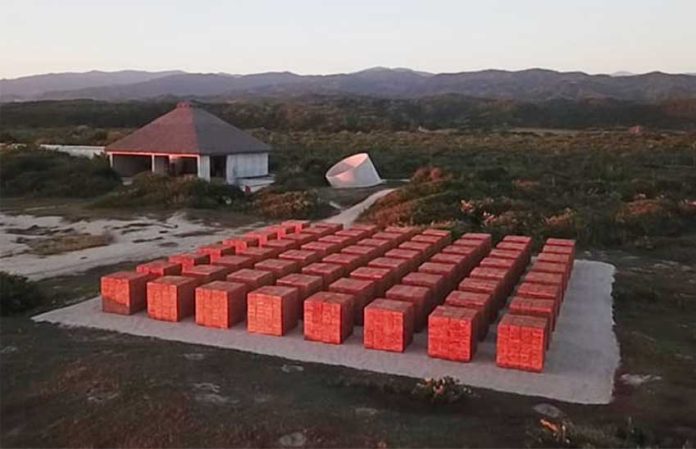A beachfront site near Puerto Escondido, Oaxaca, is now home to a unique piece of art — a grid of 64 two-meter-high cubes made from thousands of red bricks.
The large-scale art installation was created by Mexican contemporary artist Bosco Sodi at Casa Wabi, an artists’ retreat and art center designed by Japanese architect Tadao Ando for his Casa Wabi Foundation.
Called Atlantes, a reference to the pre-Hispanic motif of stone columns carved to resemble human figures, Sodi’s installation is comprised of stacks of bricks arranged in an eight-by-eight-foot grid. Identical spaces are left around each to create a symmetrical arrangement that draws on the concept of a chessboard.
“I wanted to do 64 cubes because I wanted to use the same structure as chess,” Sodi told the architectural and design magazine Dezeen. “I wanted it to be very mathematical. The cube is a completely human form; you do not find the cube in nature.”
Each of the 64 blocks is made of 1,600 clay bricks that Sodi and a team of local craftsmen made by hand — a total of 102,000 pieces.
ATLANTES PAVILION 1 from Studio Bosco Sodi on Vimeo.
To make the bricks, the team used raw earth and mixed it with water and sand to form clay, and then shaped and smoothed each one by hand. They were then left to air-dry in the sun.
Once hardened, the bricks were fired in a traditional kiln near the beach site using local wood, jacaranda seeds and coconut shells. This process imbued the bricks with terracotta hues, as well as green and black streaks.
“This concept, of getting materials that come from the earth in all of the four elements – earth, fire water, air – to form clay, and after time, to bring it back to its origins [is important to me],” Sodi said.
The installation took over two years to complete, but will eventually disintegrate.
The bricks will slowly deteriorate and the form will become organic again over a period of many years, Sodi said.
“[Eventually] they will become mountains of clay that are completely abstract and random, but in a very human way of arranging them.”
Source: Dezeen (en)
